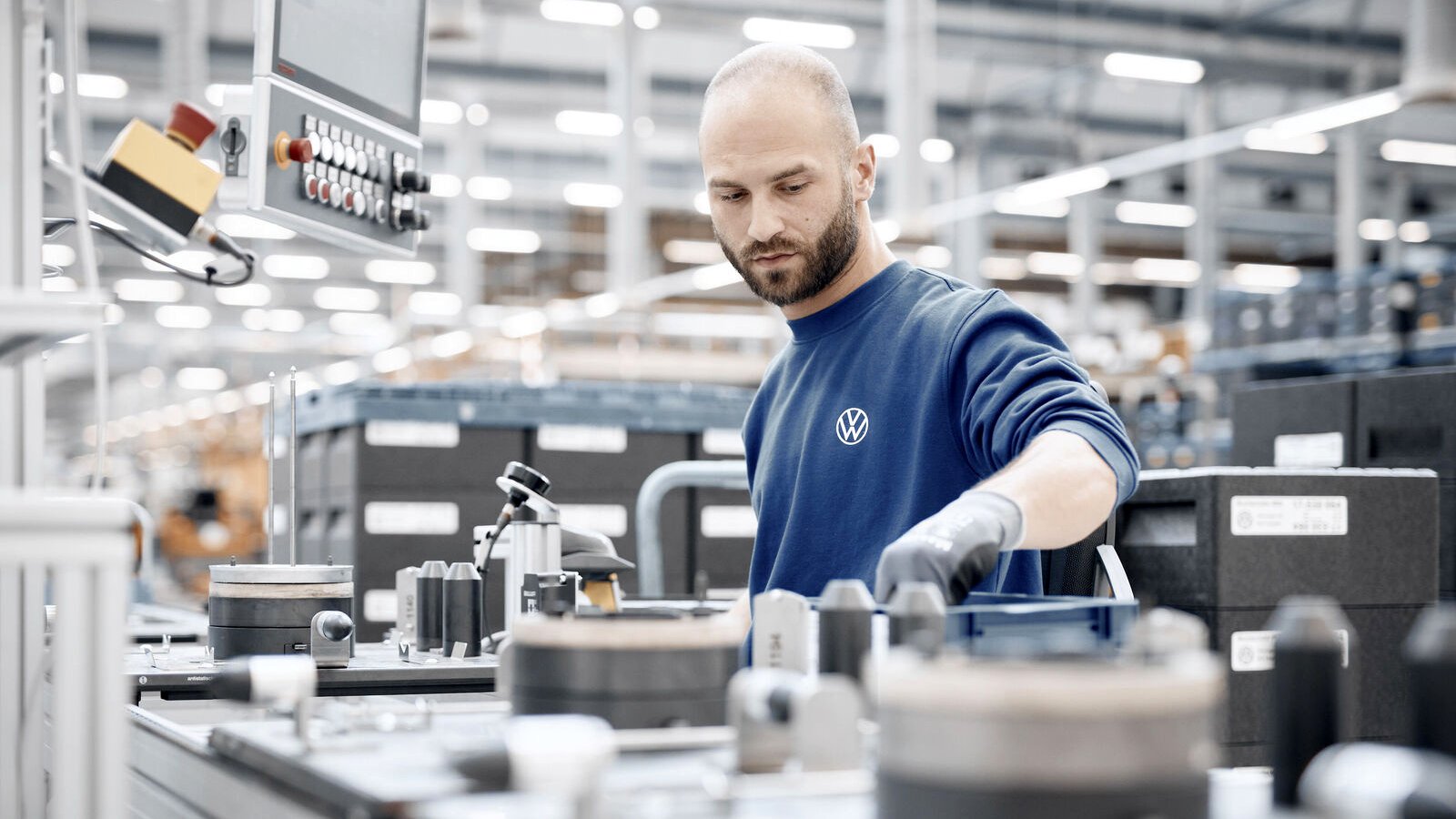Tools & Platforms
Google partners with Youngkin and offers AI training courses to Virginia job seekers

RESTON, Va. – Republican Gov. Glenn Youngkin announced on Tuesday that Google will partner with his administration to provide free and low-cost artificial intelligence certification courses to Virginians as part of his office’s ongoing effort to connect citizens to new jobs amid changes to the state’s economy.
The partnership, which he has described as an AI career launchpad, will provide Google-sponsored AI training courses for up to 10,000 Virginians at any given time, officials said at Google’s office in the northern part of the state.
The training opportunities will be listed on a job website that Youngkin launched earlier this year, in response to significant layoffs among federal workers by the Trump administration, including many workers from Virginia.
“All fields, all career movements somewhere along the way, are going to incorporate this next generation of technology,” Youngkin said at the news conference.
The initiative comes with unemployment rising in Virginia, which has roughly 20,400 continued unemployment claims, state Secretary of Labor George’ Bryan’ Slater said after the news conference. Roughly 2,800 people initially filed unemployment claims during the first week of July, which is about 6.1 percent higher than the previous week.
The AI webpage will feature the free courses as well as some low-cost learning opportunities, ranging “from beginner friendly courses on AI fundamentals and practical workplace applications of artificial intelligence to bootcamps and degree programs offered by Virginia’s leading-edge community colleges and universities,” according to the governor’s office.
Nicole Overley, commissioner of Virginia Works, said businesses have told her office that AI proficiency has become increasingly necessary in their industries. She said the training would help Virginians become competitive in the job markets where these very businesses are hiring.
Overly confirmed that the training courses won’t cost taxpayers anything and are being donated by Google. Bronagh Friel, head of partnerships at Google, said she was proud of the collaboration with the state.
“Google is committed to championing economic growth and opportunity in Virginia,” she said.
___
Olivia Diaz is a corps member for The Associated Press/Report for America Statehouse News Initiative. Report for America is a nonprofit national service program that places journalists in local newsrooms to report on undercovered issues.
Copyright 2025 The Associated Press. All rights reserved. This material may not be published, broadcast, rewritten or redistributed without permission.
Tools & Platforms
“No process without AI” – Volkswagen gears-up €1bn industrial AI drive

Volkswagen will invest €1bn in AI by 2030 to transform vehicle development, production, and IT, targeting €4bn savings, faster innovation cycles, digital sovereignty in Europe, and “AI everywhere” across its industrial value chain.
In sum – what to know:
Billion-dollar AI drive – VW targets “no process without AI” to transform design, production, logistics, and IT.
Bigger industrial gains – 1,200+ AI production apps deployed; €4bn savings and 25% faster production targeted.
Sovereignty and support – push for digital sovereignty in Europe; request for AI-friendly support and regulation.
German automaker Volkswagen Group is to invest €1 billion ($1.17bn) by 2030 in AI-related industrial technologies to boost vehicle development, industrial applications, and IT infrastructure. It made the announcement at the IAA Mobility trade fair in Munich this week, with an AI-rules kind of message about its future Industry 4.0 strategy: “no process without AI”, it said. The firm reckons it will save €4 billion by 2035 from efficiency gains and cost avoidance through “consistent and scalable use of AI” across its entire “value chain”.
Hauke Stars, member of the management board for IT at Volkswagen Group, said: “Wherever we see potential, we utilize AI in a targeted manner. Scalable, responsible, and with clear industrial benefits. Our ambition: AI everywhere, in every process.” The group is working with unnamed technology and industry partners to develop a domain-specific Industry 4.0 language model, a so-called Large Industry Model (LIM), which uses design, production, and sundry automotive process data from participating companies.
It stated: “Collective industrial process knowledge could be used to train an AI model that helps optimize internal workflows and enables more efficient logistics and process control across industries and for all participants.” An organizational blueprint for such an initiative, still in the “exploration” phase, might be the open Catena-X platform for the automotive sector and broader industrial value chain, it suggested. The Catena-X platform is designed to allow secure data exchange between manufacturers, suppliers, and other tech providers.
Volkswagen is a founding member, alongside BMW, BASF, Mercedes-Benz, SAP, Siemens, ZF, and T-Systems. In the end, its total strategy is to make vehicles better, and faster, and AI looks like the answer. Volkswagen claims to have 1,200 AI applications in production already, and “several hundred more” in development or implementation. It has a proprietary “factory cloud”, connecting more than 40 production sites across the group. “Volkswagen is continuously introducing new AI applications into its manufacturing processes,” it said.
Its centralised “factory cloud”, presented as a Digital Production Platform (DPP), is part of its group-wide private cloud infrastructure. This will be “significantly expanded” in the coming years, in line with its digital sovereignty play, and its hard line on resiliency “against external risks and influences”. It stated: “Technological independence and resilience begin with maintaining control over data – and that only works if data is stored, processed, and protected within Europe.” Sustainability, cybersecurity, and knowledge sharing are all part of its smarter production strategy.
In vehicle development, before its vehicles are connected to its “factory cloud” in its manufacturing sites, Volkswagen is working with Dassault Systèmes to build an “AI-powered engineering environment” to help engineers with virtual testing and component simulations across all its brands in all its markets. It wants to reduce its development cycle by around 12 months (25 percent) – to 36 months, “or less”.
But there was a political message in its address at IAA Mobility, as well: it wants support, in exchange for support. It stated: “Volkswagen is committed to actively shaping the future of AI in Europe and supporting political and economic frameworks at both national and European levels. In an increasingly challenging environment – marked by high energy prices, elevated location costs, and administrative complexity – the company sees a clear need to advance technological innovation in AI in Germany and Europe through political support.”
It wants “nnovation-friendly frameworks in the global AI race”, it said. Stars said: “We support the innovation-friendly evolution of European regulation. In addition, targeted incentives are needed: We must make more of what we’re capable of. This includes, above all, funding programs that strengthen spin-offs from universities and research institutions and accelerate the transfer of scientific knowledge into market-ready applications.”
The company has a large-scale internal AI training programme in place, since last year, which has already trained 130,000 staff across all levels, in all its markets. As a footnote, a blog post to go with the news of its AI investment makes AI need humans – in charge of it, and also accepting of it. Hence all the training. It stated: “AI needs rules… That is why we act on the basis of ethical standards and European regulation. When it comes to sensitive personnel issues, for example, a human being will make the final decision. Always. The key to the success of AI is acceptance.”
Stars said: “With AI, we are igniting the next stage on our path to becoming the global automotive tech driver. AI is our key to greater speed, quality, and competitiveness – across the entire value chain, from vehicle development to production. Our ambition is to accelerate our development of attractive, innovative vehicles and bring them to our customers faster than ever before. To achieve this, we deploy AI with purpose: scalable, responsible, and with clear industrial benefits. Our ambition: no process without AI.”
Tools & Platforms
AI Tool Predicts Stem Cell Transplant Infection Risk

University at Buffalo researchers and collaborators have completed a series of studies that reveal how much painful mouth sores known as oral mucositis increase infection risks in stem cell transplant patients and how artificial intelligence can be used to more accurately predict those risks.
Their paper, published Aug. 14 in the journal Cancers, revealed that patients undergoing hematopoietic stem cell transplants (HSCT) for blood cancers who develop oral mucositis are at nearly four times the risk of developing a severe infection compared to those without the condition. This is the first time that risk has been quantified.
The paper is the most comprehensive synthesis to date of recent findings on individual risk factors for oral mucositis, whether the transplant involves a patient’s own stem cells or donor cells. Risk factors are identified as specific drugs, such as methotrexate, high-dose chemotherapy, female gender, younger age, kidney issues, and reactivation of the herpes simplex virus.
A significant portal for infections
“Oral mucositis is not simply a source of discomfort; it serves as a significant portal for infections in immunocompromised patients,” says Satheeshkumar Poolakkad Sankaran, DDS, corresponding author on the paper and research scientist in the Division of Hematology/Oncology in the Department of Medicine at the Jacobs School of Medicine and Biomedical Sciences at UB. “All my patients with oral mucositis experience poorer outcomes, adversely impacting their quality of life.”
For this reason, he says, screening every cancer patient for oral mucositis risk ahead of time makes sense because the condition is so common — it occurs in up to 80% of HSCT patients. “Knowing risk factors can help doctors spot patients at high risk early,” he says. “This can allow for preventive steps, like oral hygiene or cryotherapy, where extremely cold temperatures are used to reduce inflammation, thus improving outcomes and quality of life.”
To better assess who is at risk, Poolakkad Sankaran and colleagues published a paper in July in Support Cancer Care describing a nomogram tool they developed to predict which patients are more likely to develop oral mucositis. A nomogram is a statistical instrument that is used to model relationships among variables. The researchers used age, gender, race, total body irradiation, and fluid/electrolyte disorders to estimate risks of developing ulcerative mucositis, a severe form of oral mucositis.
“This nomogram simplifies complex data for clinicians, enabling targeted oral care before HSCT,” explains Joel Epstein, DMD, co-author at the City of Hope Comprehensive Cancer Center.
Explainable AI better predicts adverse events
At the Multinational Association of Supportive Care in Cancer 2025 meeting in June, Poolakkad Sankaran presented additional related findings on a nomogram-based model that can better predict adverse events. He explains that this model was evaluated against a new framework that uses explainable AI, employing machine learning algorithms to assess intricate clinical and demographic facts. Explainable AI is designed to provide the rationale behind the output of an AI system.
“The AI model exhibited enhanced predictive accuracy, recognizing patterns linked to toxicities that conventional nomograms failed to detect,” he adds. “By synthesizing demographic and clinical data, the system can predict adverse events, facilitating individualized therapy modifications to reduce toxicities.”
Poolakkad Sankaran is validating the model with other cancer adverse events such as immune-related adverse events in a larger cohort, working with Roberto Pili, MD, a co-author and associate dean for cancer research and integrative oncology in the Jacobs School. Their ultimate goal is widespread clinical adoption of the model in assessing cancer patients.
“These interconnected studies underscore the oral-systemic connection in cancer therapy, urging multidisciplinary collaboration among oncologists, dentists, and AI specialists,” Poolakkad Sankaran says. “As cancer management such as HSCT and immunotherapy grows — particularly for older patients — these tools promise reduced complications, shorter hospitalizations, and lower costs.”
Reference: Eichhorn S, Rudin L, Ramasamy C, et al. Elevated likelihood of infectious complications related to oral mucositis after hematopoietic stem cell transplantation: A systematic review and meta-analysis of outcomes and risk factors. Cancers. 2025;17(16). doi: 10.3390/cancers17162657
This article has been republished from the following materials. Note: material may have been edited for length and content. For further information, please contact the cited source. Our press release publishing policy can be accessed here.
Tools & Platforms
Building a solid foundation to support AI adoption at Bentley

On determination: Years ago, there was a program called Tomorrow’s World, and it was all about the future and what that could look like. I was fascinated by it because in one episode, there was a woman presenter. So that inspired me then, and showed you could aspire to that. I went into my first role working in a software development division in the mid-90s where everyone was frantically recoding everything because of Y2K. Those were my very early days in technology. But even then, I had female role models who made it seem accessible. I was curious but not very academic at school, so I felt lucky to get a job in technology. Being able to learn coding was very interesting, and I found my routine, and continued to grow and move through the ranks.
On data: I always say there’s no AI without data. So the thing we’ve been working on for the last two years is the data strategy, understanding the governance, the framework, and everything else we need there as foundations. We’ve done a lot of work around data literacy and upskilling in the organization, and we’ve been doing that in preparedness for AI because we know everybody wants it, and they want it now, but they don’t necessarily know what they want it for. So it’s about creating that safe space where people can test and learn. I’ve been working in partnership with the chief strategy officer to say this needs to be a joint business, and we need an IT strategy around data and AI. It can’t just be directly from it. We need to work together with the business to understand what we want to use AI for so we can get to value sooner. And if you think about what we’ve been doing for the last three years in moving to the enterprise systems, reducing the systems landscape, and making sure we understand what data we’ve got in those systems, it’s all been creating the pathway and the foundation levels we need to get us there sooner.
On streamlining efficiencies: When I came into automotive, it was essentially learning a whole different language because many of the abbreviations are tied to German words. So even when you know them, you don’t understand what they mean. For me, it was about taking that big step back, looking at our business and saying we’re all about designing and creating an amazing product. We then have customers we service through the web or the app. So it’s broken down into value streams, and within those are the processes of designing, building, marketing, and selling cars. I like logic, so I try to apply it when we examine capabilities, like reducing cost of delivery from an IT perspective. That gives us more money to invest in other things, or future ready our organization.
-

 Business2 weeks ago
Business2 weeks agoThe Guardian view on Trump and the Fed: independence is no substitute for accountability | Editorial
-
Tools & Platforms4 weeks ago
Building Trust in Military AI Starts with Opening the Black Box – War on the Rocks
-

 Ethics & Policy1 month ago
Ethics & Policy1 month agoSDAIA Supports Saudi Arabia’s Leadership in Shaping Global AI Ethics, Policy, and Research – وكالة الأنباء السعودية
-

 Events & Conferences4 months ago
Events & Conferences4 months agoJourney to 1000 models: Scaling Instagram’s recommendation system
-

 Jobs & Careers2 months ago
Jobs & Careers2 months agoMumbai-based Perplexity Alternative Has 60k+ Users Without Funding
-

 Podcasts & Talks2 months ago
Podcasts & Talks2 months agoHappy 4th of July! 🎆 Made with Veo 3 in Gemini
-

 Education2 months ago
Education2 months agoMacron says UK and France have duty to tackle illegal migration ‘with humanity, solidarity and firmness’ – UK politics live | Politics
-

 Education2 months ago
Education2 months agoVEX Robotics launches AI-powered classroom robotics system
-

 Funding & Business2 months ago
Funding & Business2 months agoKayak and Expedia race to build AI travel agents that turn social posts into itineraries
-

 Podcasts & Talks2 months ago
Podcasts & Talks2 months agoOpenAI 🤝 @teamganassi



















